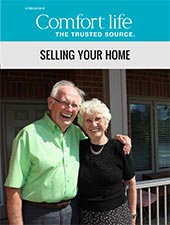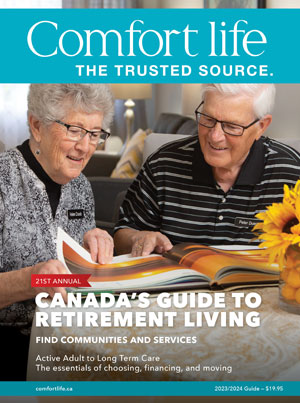Family caregivers play an invaluable role in Canadian society. While we have traditionally held bragging rights concerning our universal health care system, there’s still a long way to go in caring for our seniors. Caregiving typically falls to family, and Statistics Canada tells us that an estimated 25% of the population provides some care for family.
“If ‘silent carers’ were to discontinue their contributions, the system would crumble and fail under the immeasurable load,” says Steve Jones, owner of In-Home Assisted Living Inc. Typically, one spouse takes on the bulk of responsibilities when loved ones’ health and independence begins to decline. As needs increase, adult children or extended family may need to also step in. The commitment often results in sacrificing time, taking a toll on caregivers’ emotional wellbeing.

“Our love and feelings of commitment can skew our perspective,” says Jones. “We lose a balance between the appropriate amount of what we should do personally and what should be assigned to reliable service providers.” In some cases, an over-commitment can actually be less helpful and possibly harmful. We let mechanics care for our cars. Financial planners care for investments. Loved ones in need should also get professional care.
Families should differentiate between roles of caregiver and carer. Caregiving is the series of tasks, often referred to as Activities of Daily Living (ADLs). These include things like personal hygiene, bathing, dressing, eating and toileting. They also include medication management, safe transfers, and medical care. Instrumental Activities of Daily Living (IADLs) is another category of tasks that include housekeeping, laundry, meal preparation, and shopping.
Caring, though, is the bigger picture, the emotional and tactical support that drives decisions to promote comfort, safety, health, and happiness. Making the transition from family caregiver to family carer is a necessary step families best take before a crisis hits. In-Home Assisted Living Inc. are professionals that help families find this proper balance.
They consider the entire family and develop a care plan. This plan considers all resources in the healthcare system, each family member's ability to contribute, and the tasks or responsibilities that are best delegated to personal support workers and professional caregivers. Then In-home Assisted Living hires, schedules and supervises these caregivers who perform the bulk of the tasks, especially ADLs. Family members can then focus on caring, love and companionship.
A checklist of both Carer and Caregiver duties and responsibilities can be found at Caregiver Checklist | iHal.ca. This is a great resource for families to use as they divvy up and assign a reasonable balance of duties and responsibilities between the service provider and everyone else involved.
Unfortunately, many families wait until a stressful breaking point or medical emergency before doing the research on homecare options or making the call to find out more. The professional staff at In-Home Assisted Living are always available to take a call and help plan for our loved ones to remain in the comfort and safety of their own home.
Learn more about In-Home Assisted Living Inc., on ComfortLife.ca.




